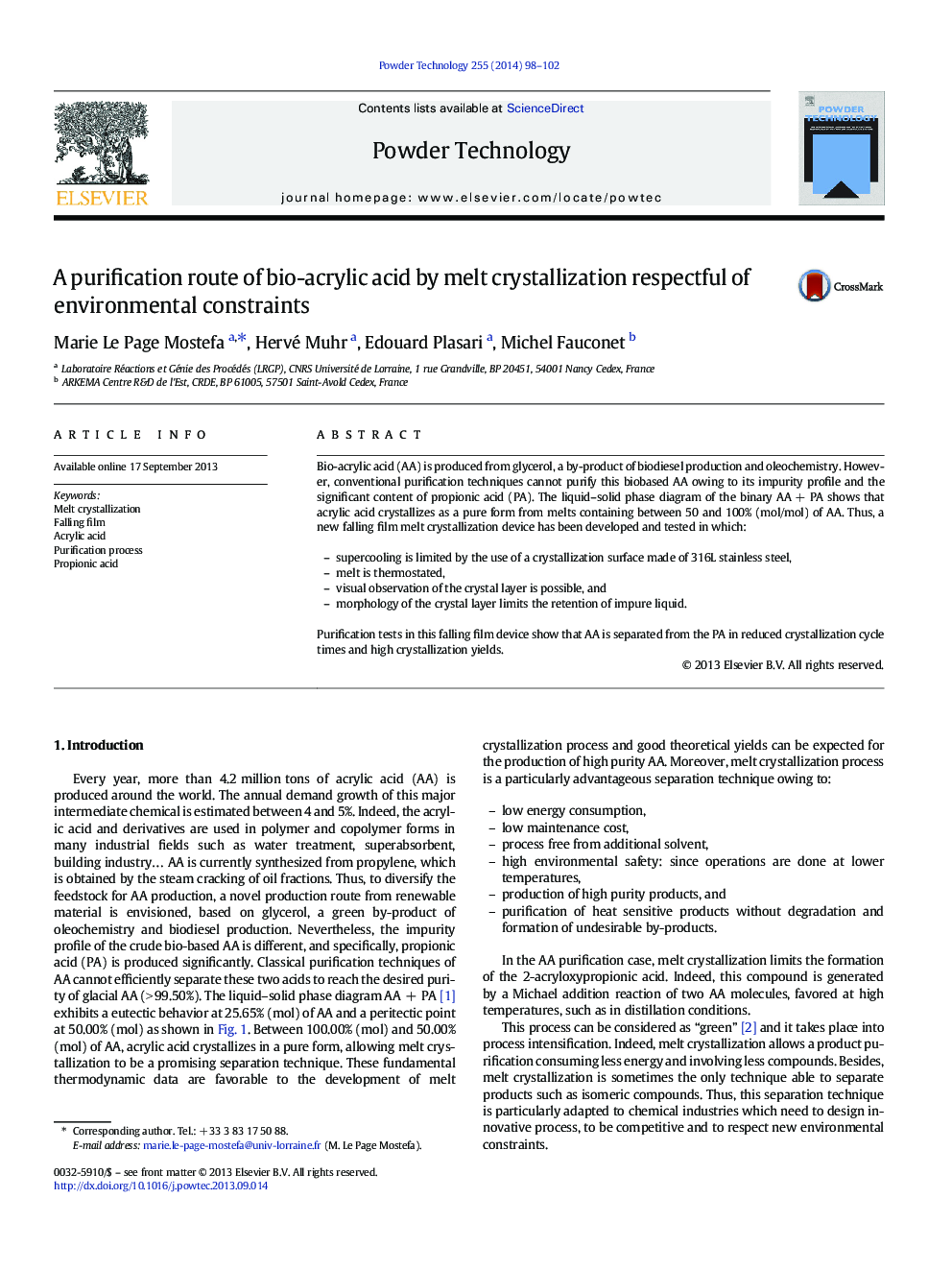| Article ID | Journal | Published Year | Pages | File Type |
|---|---|---|---|---|
| 236137 | Powder Technology | 2014 | 5 Pages |
•A falling film melt crystallization device has been designed.•Acrylic acid and propionic acid are separated using this technology.•Crystallization kinetics is studied as a function of cooling rate.•Separation efficiency decreases with crystallization yield.•The morphology of the AA crystalline layer is improved.
Bio-acrylic acid (AA) is produced from glycerol, a by-product of biodiesel production and oleochemistry. However, conventional purification techniques cannot purify this biobased AA owing to its impurity profile and the significant content of propionic acid (PA). The liquid–solid phase diagram of the binary AA + PA shows that acrylic acid crystallizes as a pure form from melts containing between 50 and 100% (mol/mol) of AA. Thus, a new falling film melt crystallization device has been developed and tested in which:–supercooling is limited by the use of a crystallization surface made of 316L stainless steel,–melt is thermostated,–visual observation of the crystal layer is possible, and–morphology of the crystal layer limits the retention of impure liquid.Purification tests in this falling film device show that AA is separated from the PA in reduced crystallization cycle times and high crystallization yields.
Graphical abstractCrude bio-acrylic acid contains a significant content of propionic acid. Melt crystallization is the only technique able to separate these two acids. A new falling film melt crystallization device has been developed in which purification tests show that acrylic acid and propionic acid are separated efficiently.Figure optionsDownload full-size imageDownload as PowerPoint slide
